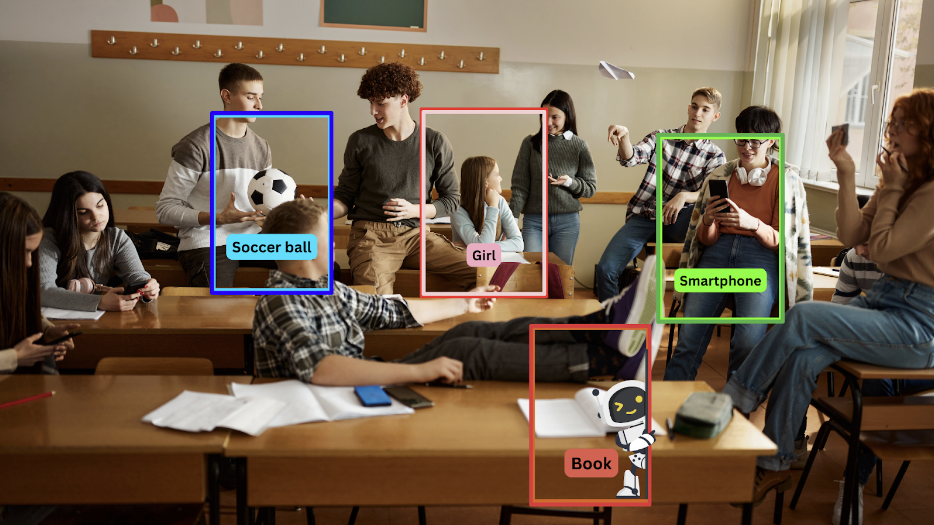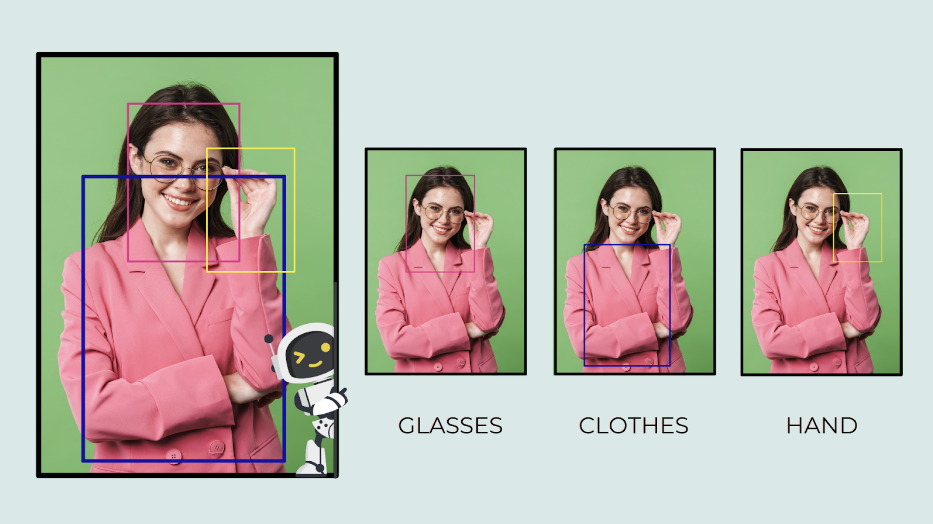Visual data analysis is a cornerstone of technological progress in AI and ML. Moreover, automatic image tagging software becomes paramount with an exponential image increase. This blog will explore AI-powered image tagging. Furthermore, it explores its profound implications for various industries.
Automatic image tagging software helps us bridge human perception with machine comprehension. This technology empowers AI algorithms to understand and interpret visual content. Moreover, it works by assigning descriptive tags or keywords to images. As a result, it unlocks possibilities for image classification, recognition, and organization tasks.
Moreover, we will explore the significance of image tagging software in data visualization. So, join us on this enlightening journey. Let’s begin.
What Are Image Tagging Techniques?
Here are the two most common image techniques.
Manual Tagging
Manual image tagging involves human annotators assigning descriptive tags or keywords to images. Moreover, this approach relies on human judgment for accuracy. Annotators analyze images, identify objects and scenes, and then apply appropriate tags.
Annotation tools with intuitive interfaces streamline the process. Furthermore, workflows include:
- Training annotators
- Initiating the tagging process
- Implementing quality checks
They can help to ensure consistency and precision.
Automated Tagging
Automated image tagging leverages AI and ML algorithms for automatic tagging. Hence, reducing manual effort. Techniques like object detection, drawing bounding boxes around objects, and semantic segmentation. Which means, labeling each pixel improves precision.
Deep learning-based approaches extract complex patterns from extensive datasets to generate accurate tags. Moreover, hybrid approaches combine manual and automated tagging with human-annotated data. It helps them to train models to tag the remaining images.
How to Prepare Training Data?
The two main steps in training data preparation are:
Data acquisition
The first step is collecting a diverse labeled images dataset. This process entails acquiring images from various sources. Hence, it ensures a wide representation of objects, scenes, and concepts.
Curating the dataset involves vetting the images and removing duplicates. It helps to ensure data quality and balance.
Data annotation
It is crucial for creating ground truth labels as the reference for training the image tagging model. Moreover, annotation methodologies include techniques like bounding boxes. It helps annotators draw boxes around objects of interest. Hence, enabling the model to detect and recognize them.
Semantic labels involve assigning descriptive keywords to images. Hence, enhancing classification capabilities. Hierarchical tags organize data into a structured taxonomy. Furthermore, it allows for more refined and context-aware image tagging. Various annotation tools help us streamline this process. They also ensure the training dataset’s accuracy and effectiveness.
How to Perform Image Tagging Model Development?
It is important to explore popular AI and ML models suitable for this task. It can help us perform image tagging model development.
Convolutional Neural Networks excel at image-processing tasks. Recurrent Neural Networks and Transformer models are valuable for sequence and context-aware tagging.
The steps involved in training image tagging models encompass the following:
- Data preprocessing
- Model architecture design
- Hyperparameter tuning
- Optimization techniques.
Data preprocessing involves cleaning, resizing, and augmenting the dataset.
Model architecture design helps us select suitable layers and structures.
Hyperparameter tuning optimizes model performance through iterative adjustments.
Optimization techniques like gradient descent enhance model convergence and accuracy during training.
A well-developed image tagging model can analyze and tag images. Hence, facilitating various AI applications.
How to Perform Integration of Image Tagging Software?
Integrating image tagging software requires utilizing popular AI and ML libraries and frameworks. Some examples are TensorFlow, PyTorch, or Keras for efficient development. These robust platforms offer pre-trained models. They also allow the building of custom models tailored to specific tagging requirements. Moreover, developers can leverage these libraries’ capabilities to enhance image classification tasks.
Furthermore, integration can be easier through APIs. Hence, it enables developers to incorporate image tagging capabilities into their applications. Developers can access advanced tagging functionalities without extensive coding by using APIs.
This integration helps us harness image tagging. Hence, resulting in improved data analysis, search, and organization.
What is Filestack’s WordPress Plugin for Image Tagging?
Filestack’s WordPress plugin offers a powerful solution for integrating image tagging capabilities. Filestack has versatile image handling capabilities, encompassing upload, storage, and advanced image tagging.
Filestack simplifies uploading and storing images. Hence, making it a favored tool for developers and businesses. Moreover, Filestack has expanded its capabilities to include AI-driven functionalities. Hence, allowing users to harness the potential of image analysis and organization.
It allows WordPress users to integrate image tagging software into their sites. This integration empowers businesses to enhance their image analysis and search functionalities.
Key features and benefits of Filestack’s WordPress plugin
Filestack’s WordPress plugin offers many benefits during file delivery. Key features include:
- Streamlined image upload
- Secure storage of training data
- Seamless integration with image tagging APIs.
How Filestack’s plugin enhances image tagging for AI and ML applications?
Efficient Image Upload and Preprocessing
Filestack’s plugin simplifies the image upload process and provides image preprocessing capabilities. Hence, preparing images for training and tagging tasks.
Secure and Reliable Image Storage
Filestack ensures secure storage of training data and labeled images. Hence, facilitating easy access for AI and ML models with image tagging software.
Integration with Image Tagging APIs
Filestack’s plugin enables seamless communication between the WordPress and image tagging software APIs. Hence, allowing smooth data transfer and integration.
Integration steps for Filestack’s WordPress plugin
- Install and activate Filestack’s plugin within the WordPress site.
- Configure API authentication and access control settings to ensure secure data transfer.
- Leverage Filestack’s API integration for communication between WordPress and image tagging software. Hence, maximizing the capabilities of image tagging for AI and ML applications.
What Are Evaluation Metrics metrics used to Assess the Performance of Image Tagging Models?
Performance evaluation
Various evaluation metrics help us assess the performance of image tagging models. Precision measures the tagged images among positive images. While recall calculates the tagged images out of actual positive images.
The F1 score combines precision and recall to balance their trade-off. The mean Average Precision also computes the average precision across different recall levels. Hence, providing a comprehensive performance measure for image tagging models.
Fine-tuning and optimization
Fine-tuning image tagging models involves adjusting parameters. It uses transfer learning or pre-trained models to improve accuracy and generalization.
Adjusting learning rates, data augmentation, and regularization enhance the model’s robustness. It also helps us reduce overfitting.
Fine-tuning enables the model to adapt to specific tagging tasks and perform on new data. Hence, making it a vital step in refining image tagging capabilities.
What Is the Process of Deploying Image Tagging Models Into Production Environments?
Model deployment
Deploying image tagging models into production environments involves several essential steps.
First, we serve the model, meaning we should access it as an API endpoint for inference.
Scalability considerations are crucial to handle varying workloads. This may involve deploying the model on cloud-based services or distributed systems.
Inference optimization techniques ensure faster and more efficient predictions. Hence, reducing latency.
Rigorous testing and monitoring help us optimize the model’s performance in real-world scenarios. Hence, ensuring reliable and accurate image tagging capabilities.
Real-time Tagging
Implementing real-time image tagging requires rapid and efficient strategies when accessing images.
Asynchronous processing can tag images in the background. Hence, ensuring a smooth user experience without waiting for immediate results.
Caching or pre-computing predictions for accessed images can reduce redundant computations. Moreover, it can improve response times.
Additionally, leveraging edge computing can enhance real-time tagging performance. Hence, enabling seamless integration of image tagging capabilities into various applications and workflows.
Conclusion
In the above blog for AI-powered image tagging, we unraveled its potential. Moreover, the seamless integration of manual and automated image tagging techniques empowers businesses. It helps them analyze vast amounts of visual data. Hence, driving innovation in various domains.
Moreover, image classification, recognition, and organization tasks reached new heights of accuracy. The power of image tagging will grow stronger as AI continues to evolve.
FAQs
What software helps to tag photos?
AI-powered image tagging software can tag photos using the following:
Object detection
Semantic segmentation
Deep learning techniques.
What is image tagging?
Image tagging assigns descriptive labels to images for better organization and analysis..
What is tagging software for?
Tagging software helps to label and categorize images. Hence, enabling efficient organization, analysis, and retrieval of visual data.
What is image tagging in AI?
Image tagging in AI is the process of assigning descriptive labels to images. Hence, enabling machine comprehension and analysis.
Upgrade your WordPress site with Filestack’s powerful image tagging plugin today!
Ayesha Zahra is a Geo Informatics Engineer with hands-on experience in web development (both frontend & backend). Also, she is a technical writer, a passionate programmer, and a video editor. She is always looking for opportunities to excel in her skills & build a strong career.
Read More →




